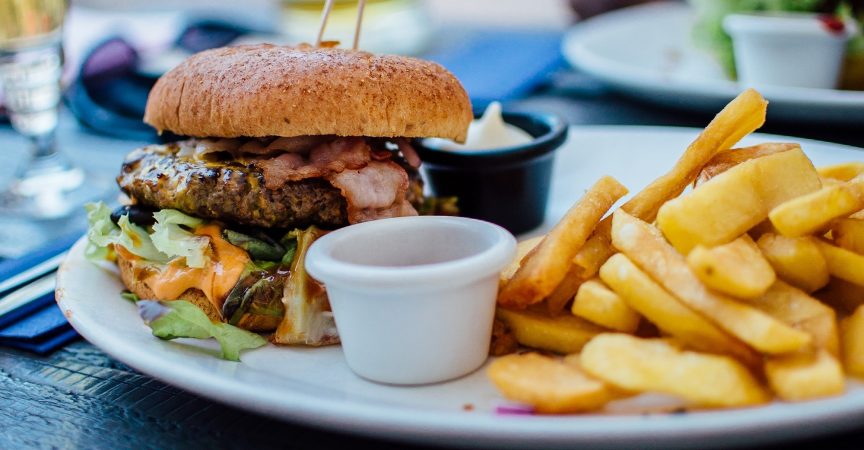Fast Food vs. Fast Fashion
When the diet and health food craze hit the 90s, the term ‘fast food’ evoked images of high-calorie, processed food. Since then however, we’ve had a shift in our mindset. Fast food has been elevated with inclusive menu offerings and the increased use of local, fresh ingredients.
It is interesting to compare this trajectory to that of the fast fashion industry, especially today. Fast fashion has enjoyed long-standing popularity among consumers as a way to quickly and inexpensively access trends. However, a consumer shift in priorities, preferences, and tastes has resulted in fast fashion taking a backseat. Just consider the sudden and recent demise of Forever 21, it’s symbolic of the changing sentiments towards fast fashion.
As hospitality industry experts, it is essential to track trends such as these, as they offer reliable insights into consumer behaviours and attitudes. Though the industries may differ, understanding customer tastes can help you adjust your business to meet current and future needs and desires.
The Evolution of Fast Food and Fast Fashion:
In the beginning, fast food and fast fashion were designed to fill a gap in their respective industries. As the first of their kind, consumers didn’t initially have many qualms with them; burger and fry chains were extremely well-liked when they arrived in Canada in the 60s, and Forever 21 has experienced relatively unwavering popularity.
However both the food and fashion landscapes have become increasingly saturated with similar business models, forcing each industry to innovate to differentiate themselves.
In addition to this, the rollercoaster of consumer tastes allowed for varying popularity of the businesses. Each innovation pushes grandfathered businesses further from relevancy until they are rendered obsolete.
The Current Sentiment:
Fast casual dining holds an entirely different meaning today than the ‘fast food’ of yesterday. How are fast fashion and fast casual restaurants perceived today? Many restaurant chains are elevating their menu, design, and reputation. These tactics have helped to shift consumer perception, and value proposition, “quick-service” restaurants no longer have to be synonymous with low-quality.

A&W is a prominent example, with their adoption of the Beyond Meat burger. The strategic move demonstrated a diversification of offerings, as well as an acknowledgment of consumer needs. These are traits that weren’t previously upheld by fast-food brands; their menu boards were mostly static and uniform. Actions such as these have contributed to a generally improved perception of fast-food restaurants.
There has also been a general diversification of fast-casual restaurant styles. In the beginning, some of the early players in Canada were A&W and McDonalds. They all offered the same general menu – burgers and fries. But in 2019, fast food can mean vegan comfort food, paleo dishes, and healthy lunch options.
Simply put, the elevation of fast-casual restaurants has rendered them accessible to more people. Consumers with dietary restrictions, those looking for calorie-conscious meals, or those simply wanting more choice all have options in this new age of ‘fast food.’
In terms of fast fashion, as is apparent from the current status of Forever 21 in Canada, consumer sentiment has changed dramatically over the past couple of years.
As environmental sustainability has become a forefront issue across all industries, many customers have come to value sustainability in brands. Unfortunately, with the constant production of new garments, fast fashion is inherently unsustainable. As sustainable practices become an increased area of importance for consumers, the fall of Forever 21 acts as a warning sign fro the foodservice industry.
The most significant difference between the two industries is the initiative they took to combat negative commentary and to adjust to changing consumer behaviour and habits.
As customers demanded alternative options, and more education as to where their food was coming from, fast food brands began sharing origin stories of their products and offering plant-based options. Fast fashion has failed to show a similar initiative.

Forecasting the Future:
Unsurprisingly, sustainability will be at the forefront of future trends in both industries. In restaurants, this will translate to more plant-based options, compostable packaging, and the involvement of brands in sustainability initiatives.
In both cases, we can expect to see an increased adoption of origin stories and traceability. With food, as well as clothing, consumers increasingly want to know where products come from, supporting local businesses, and ethical/sustainable sourcing becomes valued more and more. It is no longer good enough to have a great final product, in-store. Consumers want to see the whole journey it took to get there.
Yes, convenience is king, but not if it comes at such a cost – and that is what fast fashion is currently experiencing. Innovation is occurring at such a high-speed today, and consumers realize that they have other options. In 2020, consumers are looking for multi-beneficial products – from sustainable fashion or environmentally friendly fast food. In short, it is no longer enough to develop a product that will satisfy a need; brands will have to start working a lot harder to retain customer loyalty.









